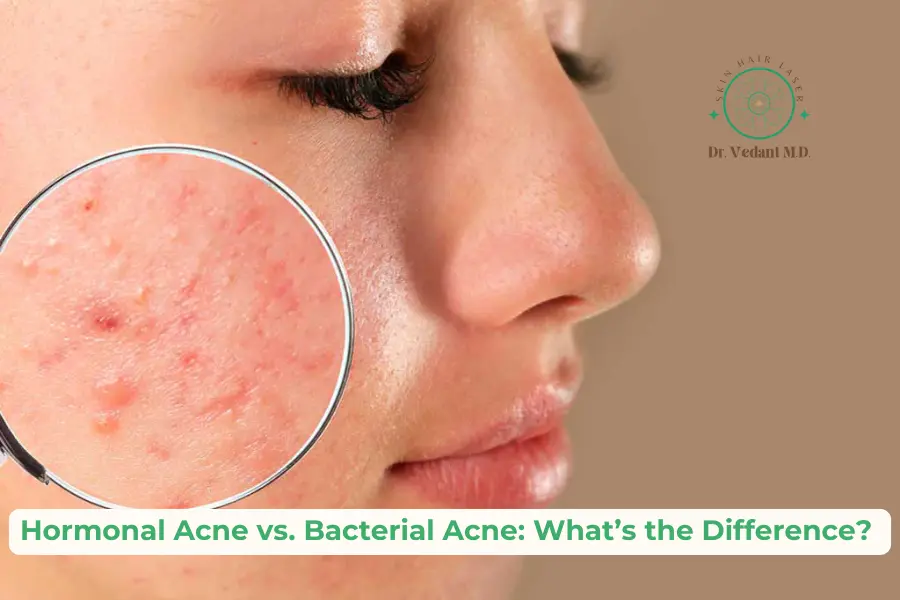Acne is the most prevalent skin condition, but not every acne is the same. Knowing the underlying cause of your acne is key to treating it properly. There are two primary types, hormonal acne and bacterial acne, and they may appear the same on the surface, but they have vastly different causes, symptoms, and treatment approaches. In this blog, Dr Vedant Ghuse, a leading dermatologist in Chembur, explains the two forms of acne as understanding the difference is step one towards clearer, healthier skin.
What Is Hormonal Acne?
Hormonal acne is caused by fluctuations in hormone levels, typically androgens such as testosterone. The hormones stimulate the skin to produce more oil (sebum), which causes pore clogging and breakouts. Hormonal acne is most prevalent in teenagers, women in their menstrual cycle, pregnancy, or menopause, and those with hormonal disorders such as PCOS (polycystic ovary syndrome).
- Typically occurs near the jawline, chin, and cheeks
- Usually deep, tender cysts instead of tiny whiteheads
- May be cyclical, breaking out at certain times of the month
- Can be accompanied by other hormonal symptoms like irregular cycles or hirsutism
What Is Bacterial Acne?
Bacterial acne develops due to the overgrowth of bacteria that cause acne. They naturally reside on the skin but can proliferate if pores are blocked with oil and dead skin cells. Inflamed red papules and pus-filled pimples develop as a result.
- Can occur anywhere on the face or body
- Oftentimes contains whiteheads, blackheads, papules, and pustules
- Typically inflamed and red
- Responds favourably to topical or oral antibiotics and antibacterial therapy
Key Differences Explained by Dr Vedant Ghuse - Top Skin Doctor in Chembur
- Cause: Hormonal Acne - Hormonal changes | Bacterial Acne - Overgrowth of bacteria
- Location: Hormonal Acne - Jawline, chin, cheeks | Bacterial Acne - Face, back, shoulders
- Appearance: Hormonal Acne - Deep cysts, few comedones | Bacterial Acne - Pustules, blackheads, whiteheads
- Triggers: Hormonal Acne - Menstrual cycle, stress, PCOS | Bacterial Acne - Poor hygiene, excess oil
- Treatment: Hormonal Acne - Hormonal treatment, retinoids | Bacterial Acne - Antibacterial agents, benzoyl peroxide
How to Treat Each Type
Hormonal Acne Treatments
- Oral contraceptives or anti-androgen drugs such as spironolactone
- Topical retinoids to clear pores
- Lifestyle modifications, such as limiting dairy or stress control
- Daily skincare with gentle, non-comedogenic products
Bacterial Acne Treatments
- Benzoyl peroxide and salicylic acid to destroy bacteria and remove dead skin cells
- Topical or oral antibiotics to lower the bacterial count
- Healthy skincare routines, such as not squeezing pimples and regular washing
- Chemical peels or exfoliating treatments from a dermatologist
Both hormonal and bacterial acne can be frustrating, but knowing the cause is key to successful treatment. Hormonal acne is deeper, cyclical, and localised, whereas bacterial acne is more superficial and generalised. If you're not sure which you're fighting, try searching for the best dermatology clinic near me, or see a professional like Dr Vedant Ghuse for an accurate diagnosis and tailored care plan. With the proper strategy, clear skin is a real possibility.
